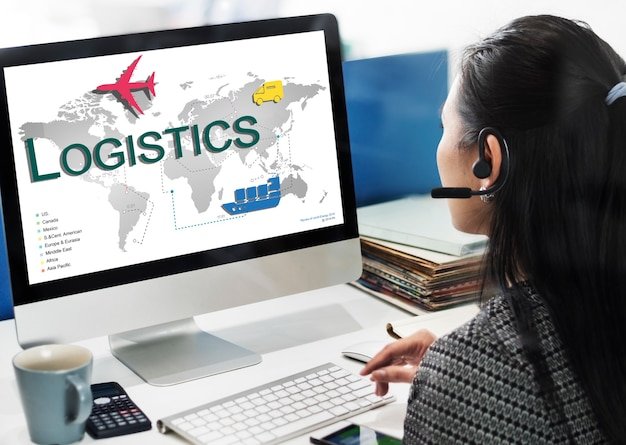What Are the 3PL Costs France to Australia?
Here is an estimation of the 3PL costs for cross-border logistics from the France to Australia, including shipping, customs clearance, warehousing, and handling services:
Discover the hidden factors influencing 3PL costs from France to Australia!
3PL Services Cost France to Australia
3PL Costs France to Australia
The cost of 3PL services from France to Australia depends on factors like transportation mode, shipment size, and storage needs. Air freight is faster but more expensive, while sea freight offers a cost-effective solution for bulk shipments.Additionally, expenses like customs fees, storing inventory cost Australia, and the cost of order fulfillment France to Australia play a significant role in determining the overall logistics budget.
Key Factors Influencing 3PL Costs France to Australia
1. Mode of Transportation:
Air freight is faster but significantly costlier compared to sea freight, which is more economical and suitable for bulk shipments.
Businesses must carefully weigh the trade-offs between speed, cost, and urgency to choose the most suitable transportation mode for their needs.
2. Shipment Size and Weight:
Larger and heavier shipments attract higher costs, with rates typically calculated per kilogram or cubic meter. Efficient packing and consolidating shipments can help optimize space and reduce expenses.
3. Customs and Regulatory Compliance:
Taxes, duties, and customs brokerage fees can significantly influence the total cost. Ensuring accurate documentation and compliance with international regulations is crucial to avoid delays and additional penalties, which can further inflate costs.
4. Value-Added Services:
Services like labeling, repackaging, and custom packaging often incur extra charges. These services, while optional, may be necessary for specific markets or customer requirements, adding to the overall logistics expenditure.
5. Geographical and Delivery Challenges:
The location of the final delivery destination in Australia can impact costs. Remote or rural areas often incur higher last-mile delivery fees due to increased travel distances and limited carrier availability.
6. Economic and Market Conditions:
Global economic factors, such as fuel prices, port congestion, and seasonal demand surges, can lead to fluctuations in freight rates and overall logistics costs. Staying informed about market trends is essential for cost management.
Ways to Reduce 3PL Costs
Consolidating Shipments: Combining smaller shipments into larger, consolidated loads can help reduce costs significantly by optimizing space and minimizing the number of shipments. This approach is especially beneficial for businesses shipping smaller quantities frequently.
Partnering with Cost-Effective Providers: Choosing a 3PL provider with expertise in 3PL logistics Australia ensures efficient operations, cost savings, and compliance with local regulations. A provider with strong networks and resources can negotiate better freight rates and reduce transit times.
Leveraging Technology: Utilizing advanced technology, such as real-time tracking and inventory management systems, can prevent delays, streamline operations, and minimize hidden expenses. Technology also provides valuable insights into supply chain performance, enabling better decision-making and cost control.
Optimizing Packaging and Routing: Reducing packaging size and weight can lower freight costs, while efficient route planning can minimize delivery expenses. Working closely with your 3PL provider to identify the most cost-effective solutions is essential.
Negotiating Long-Term Contracts: Establishing long-term contracts with reliable 3PL providers can help secure consistent pricing and avoid fluctuations due to seasonal demand or economic shifts.
Challenges in Managing 3PL Costs
Fluctuating Freight Rates: Seasonal demand, geopolitical issues, and global events can lead to unpredictable price changes, making it challenging to maintain a stable logistics budget.
Handling Delays and Disruptions: Factors like adverse weather conditions, customs delays, and port congestion can cause unexpected disruptions, leading to increased costs and missed deadlines. Proactive risk management strategies are critical to mitigating these challenges.
Managing Hidden Fees: Additional charges, such as fuel surcharges, storage penalties, and customs inspection fees, can quickly inflate costs. Businesses must thoroughly review contracts and invoices to avoid surprises.
Complex Compliance Requirements: Navigating customs and regulatory procedures in both France and Australia can be time-consuming and costly if not managed properly. Ensuring all documentation is accurate and complete is vital.
Pallet Type Comparison: Weight, Load, and Use Cases
3PL (Third-Party Logistics) Costs (Various cities)
Conclusion
Understanding the costs associated with 3PL services from France to Australia is crucial for effective logistics planning and budgeting.By carefully analyzing freight options like shipping cost France to Australia or air freight Australia, optimizing storage solutions, and partnering with reliable providers, businesses can control expenses while maintaining operational efficiency.Leveraging technology and negotiating cost-effective contracts further enhances cost management. Additionally, staying informed about Logistics Industry Growth trends enables businesses to adapt to market dynamics. Proactively addressing challenges such as fluctuating rates and hidden fees allows businesses to streamline their supply chain and deliver value to customers efficiently.
FAQs on 3PL Costs France to Australia
What is the cheapest way to ship from France to Australia?
Sea freight is typically the most cost-effective option for bulk shipments.How are 3PL costs calculated for international shipments?
Costs depend on factors like shipment size, mode of transport, and value-added services.Are air freight services worth the higher cost?
Yes, for time-sensitive shipments, air freight offers unmatched speed and reliability.What factors contribute to reverse logistics costs?
These include inspection, refurbishment, and restocking expenses.How can I ensure transparent pricing from 3PL providers?
Request detailed quotes and verify costs for hidden fees like fuel surcharges and handling charges.




